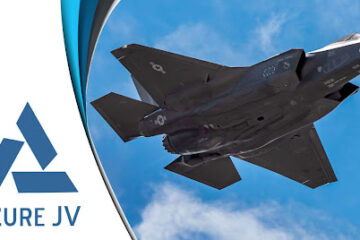Abstract:
In recent years, artificial intelligence (AI) has become a pivotal technology across various sectors, revolutionizing how we process information, make decisions, and interact with machines. Traditional computing architectures, however, often struggle to efficiently handle the complex and dynamic workloads associated with AI. Enter neuromorphic computing—a cutting-edge approach designed to mimic the way the human brain operates. By emulating the neural structures and processes of biological systems, neuromorphic computing aims to revolutionize AI, providing a more efficient and powerful means of processing information.
This blog will delve into the principles of neuromorphic computing, its applications, market potential, and why it is poised to be the future of artificial intelligence.
Understanding Neuromorphic Computing
Neuromorphic computing is inspired by the architecture and functioning of the human brain. Unlike traditional von Neumann architectures, which separate memory and processing units, neuromorphic systems integrate these elements to mimic the brain’s interconnected networks of neurons and synapses. This design allows neuromorphic chips to process information in parallel and more efficiently, enabling them to handle tasks that require real-time processing, such as sensory perception and motor control.
The fundamental unit of a neuromorphic system is the artificial neuron, which can communicate with other neurons through synapses. These neurons can fire signals based on incoming information, allowing for adaptive learning and decision-making capabilities similar to those of biological systems. As a result, neuromorphic computing systems are particularly suited for tasks such as image and speech recognition, natural language processing, and robotics.
Current State of the Neuromorphic Computing Market
According to Persistence Market Research’s projections, the global neuromorphic computing market is currently valued at approximately US$ 5.4 billion. With a robust compound annual growth rate (CAGR) of 20.9%, the market is projected to reach US$ 20.4 billion by 2031. This rapid growth can be attributed to several factors, including the rising demand for AI-driven applications, advancements in machine learning algorithms, and the increasing need for high-performance, low-power computing systems.
Drivers of Market Growth
- Rising Demand for AI-Driven Applications
The explosion of data in various sectors—ranging from healthcare to finance—has led to an increased demand for sophisticated AI applications. Neuromorphic computing can process and analyze vast amounts of data more efficiently than traditional systems, enabling faster decision-making and real-time insights. Industries such as autonomous vehicles, robotics, and smart cities are increasingly leveraging this technology to enhance their operational capabilities.
- Advancements in Machine Learning Algorithms
The development of more advanced machine learning algorithms has opened new avenues for AI applications. Neuromorphic computing complements these advancements by providing a computing architecture that can efficiently handle the demands of these complex algorithms. The ability to learn and adapt in real-time makes neuromorphic systems particularly suited for tasks that require continuous learning and dynamic adjustments.
- Need for High-Performance, Low-Power Computing Systems
As AI applications become more prevalent, the need for efficient computing systems that consume less power has become paramount. Traditional data centers consume significant amounts of energy, raising concerns about their environmental impact. Neuromorphic computing offers a compelling alternative by reducing power consumption while maintaining high performance. This capability is particularly crucial for applications deployed in edge computing environments, where energy efficiency is essential.
Applications of Neuromorphic Computing
The versatility of neuromorphic computing allows for its application across various domains. Some notable applications include:
- Robotics
Neuromorphic computing enhances robotic systems by enabling them to perceive their environments and respond in real-time. Robots equipped with neuromorphic chips can process sensory information from their surroundings, allowing them to navigate complex environments, interact with objects, and learn from their experiences. This capability is particularly beneficial in fields such as manufacturing, healthcare, and exploration.
- Autonomous Vehicles
The development of self-driving cars relies heavily on real-time processing of data from various sensors. Neuromorphic computing can improve the efficiency and accuracy of object recognition, decision-making, and path planning in autonomous vehicles. By mimicking the way humans perceive their environment, neuromorphic systems can enhance the safety and reliability of these vehicles.
- Healthcare
In healthcare, neuromorphic computing can be utilized for tasks such as medical image analysis, patient monitoring, and personalized medicine. By processing large volumes of medical data in real-time, neuromorphic systems can assist in diagnosing diseases, predicting patient outcomes, and optimizing treatment plans. This technology can significantly enhance the efficiency of healthcare delivery and improve patient outcomes.
- Internet of Things (IoT)
As the IoT ecosystem continues to expand, the need for efficient data processing at the edge becomes increasingly important. Neuromorphic computing can empower IoT devices to process data locally, reducing latency and bandwidth requirements. This capability enables smarter, more responsive devices that can adapt to their environments and user preferences.
Challenges Facing Neuromorphic Computing
While the potential of neuromorphic computing is immense, several challenges must be addressed for widespread adoption:
- Complexity of Design and Implementation
Designing and implementing neuromorphic systems can be complex, requiring a deep understanding of both neuroscience and computer science. The development of efficient algorithms that can fully leverage the capabilities of neuromorphic architectures is still an ongoing area of research.
- Limited Standardization
Currently, there is a lack of standardization in neuromorphic computing technologies and architectures. This fragmentation can hinder interoperability and complicate the integration of neuromorphic systems into existing infrastructures. Establishing industry standards will be crucial for the broader adoption of this technology.
- Research and Development Costs
The research and development required to advance neuromorphic computing technologies can be costly. Significant investment is needed to explore new materials, architectures, and algorithms that can enhance the performance of neuromorphic systems. This investment may be a barrier for some organizations looking to adopt this technology.
Future Prospects of Neuromorphic Computing
Despite these challenges, the future of neuromorphic computing is bright. As research continues to advance, we can expect to see more robust neuromorphic architectures, improved algorithms, and increased integration with existing technologies.
Collaboration between academia, industry, and government will play a crucial role in driving innovation and overcoming the hurdles facing neuromorphic computing. Initiatives that promote research and development, standardization, and cross-disciplinary collaboration will help accelerate the adoption of this promising technology.
Conclusion
Neuromorphic computing represents a paradigm shift in artificial intelligence, offering a more efficient and powerful means of processing information. As the demand for AI-driven applications continues to rise, the neuromorphic computing market is expected to grow significantly, reaching US$ 20.4 billion by 2031.
By mimicking the brain’s architecture, neuromorphic systems can provide advanced capabilities in robotics, autonomous vehicles, healthcare, and IoT applications, among others. While challenges remain, the potential for neuromorphic computing to revolutionize AI and enable new possibilities in various industries is undeniable. As we move forward, embracing this innovative technology could lead to a future where machines learn and adapt in ways that were once thought to be exclusive to biological systems.




